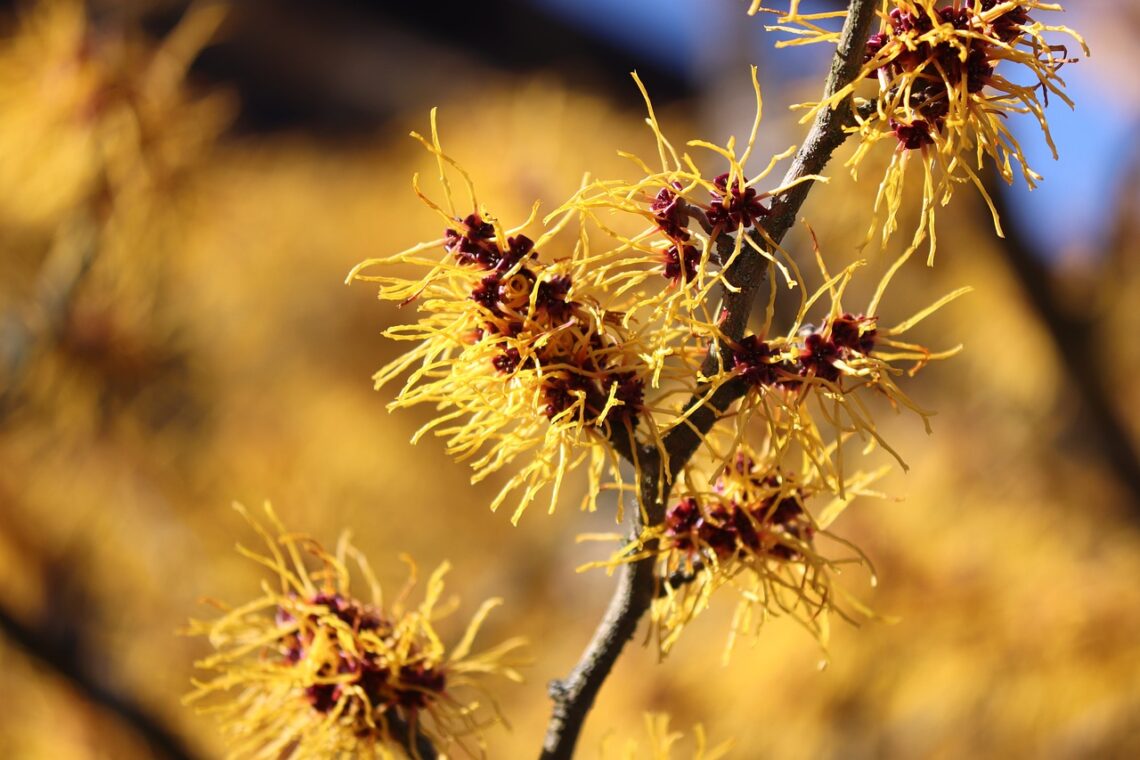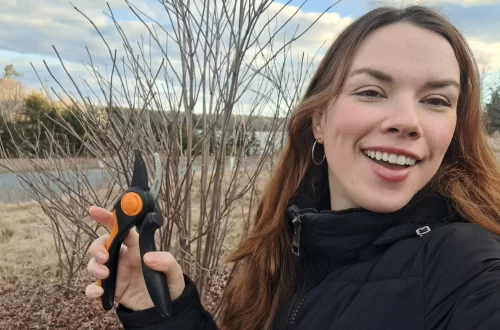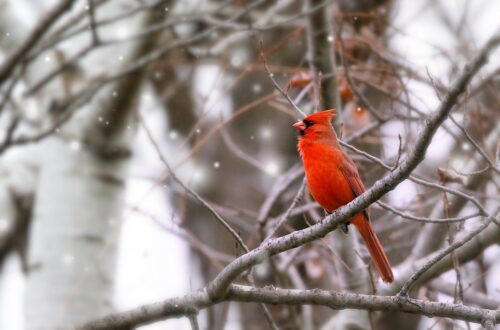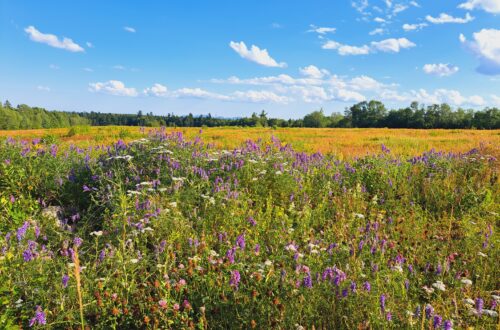Find native plants that flower in winter and other colorful plants to plant in winter gardens!
There’s no reason why garden beds need to look drab and dull in winter. From brightly colored berries to winter blooming plants, there are lots of winter interest plants for native gardens. In the list below, you’ll find 18 winter garden plants, trees, and shrubs that are native to North America and certain to add winter color to your space!
Affiliate disclosure: As an Amazon Associate, I may earn commissions from qualifying purchases.
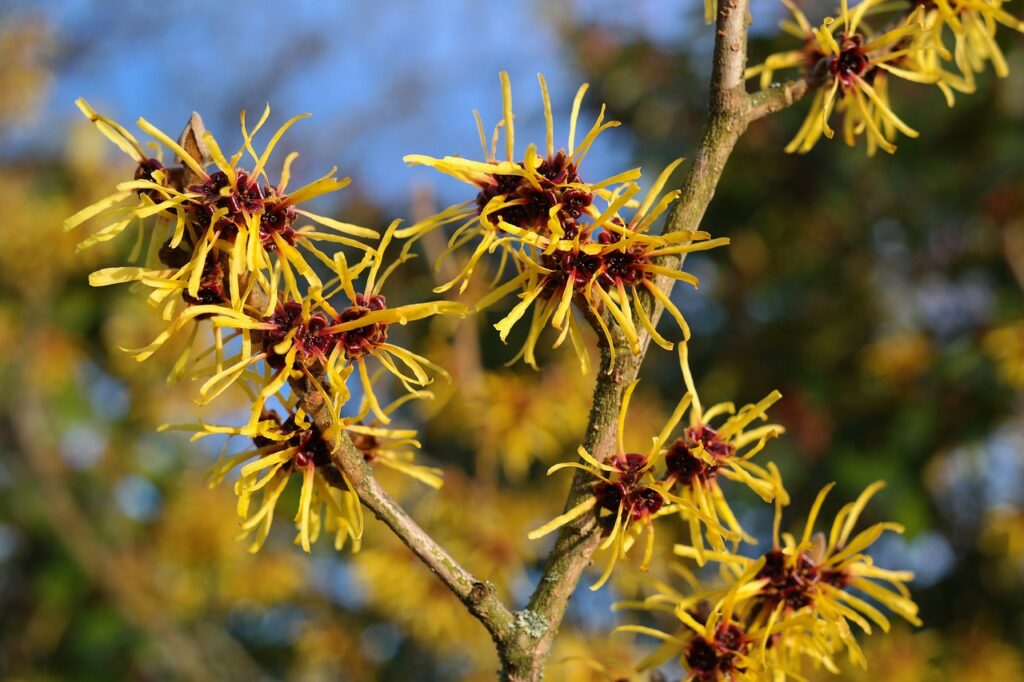
1. American Witch Hazel (Hamamelis virginiana)
Witch hazel is mostly known for its medicinal uses, but it’s also one of the few native plants that blooms in winter! Witch hazel’s fragrant yellow flowers are at their peak from October to December, and they provide important support for pollinators when few other plants are in bloom.
Native Range: East and Central United States and parts of Canada
Point of Interest: Winter blooming flowers
Attracts: Winter moths, flies, and bees
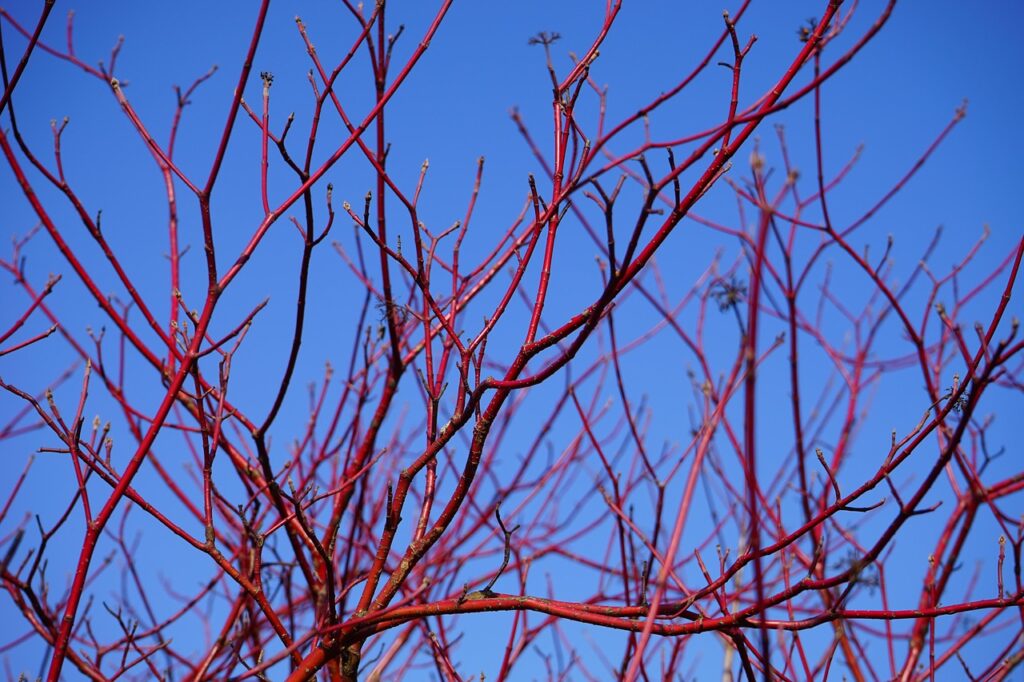
2. Red Twig Dogwood (Cornus sericea)
Also known as red osier dogwood, this colorful shrub comes alive when its leaves fall in autumn and expose its bright red stems. These plants are magnets for pollinators during the growing season and, at just 3 to 9 feet tall, they’re the perfect size for growing in the back of flower beds!
Native Range: Throughout Canada and United States
Point of Interest: Colorful bark
Attracts: Assorted pollinators when in bloom
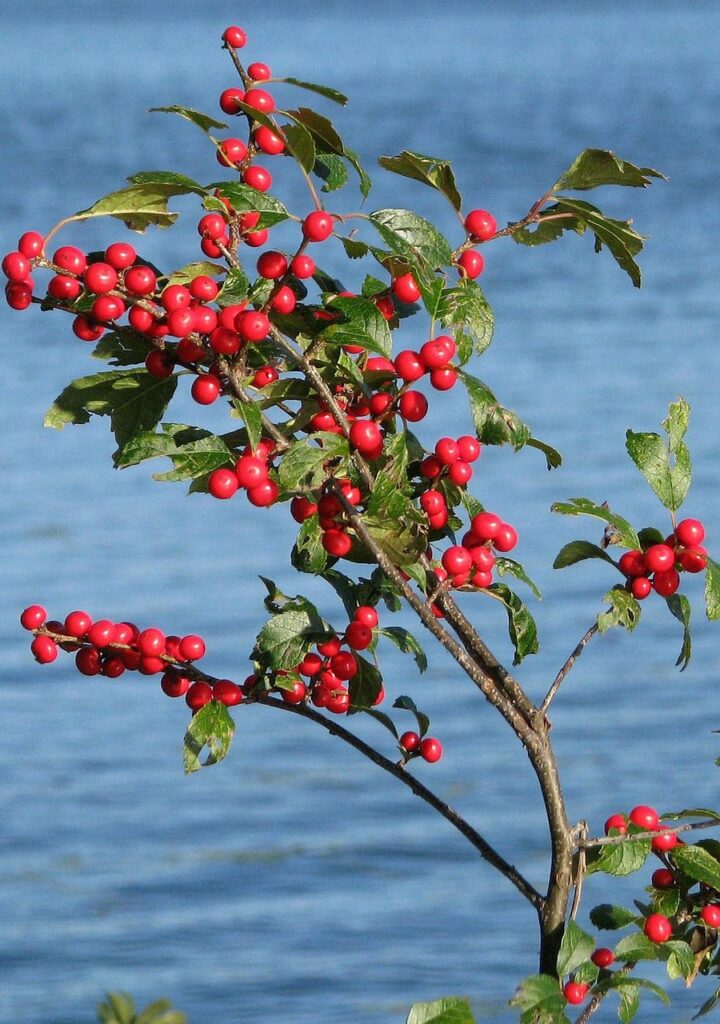
3. Winterberry (Ilex verticillata)
Winterberry is a type of holly that grows between 5 to 15 feet tall and is native to North America. Unlike the famous English holly, this plant drops its leaves in winter — but its bright red berries stay in place!
Native Range: East and Central United States and parts of Canada
Point of Interest: Bright red, winter berries
Attracts: Winter birds, also acts as a host plant for several species of moths and butterflies
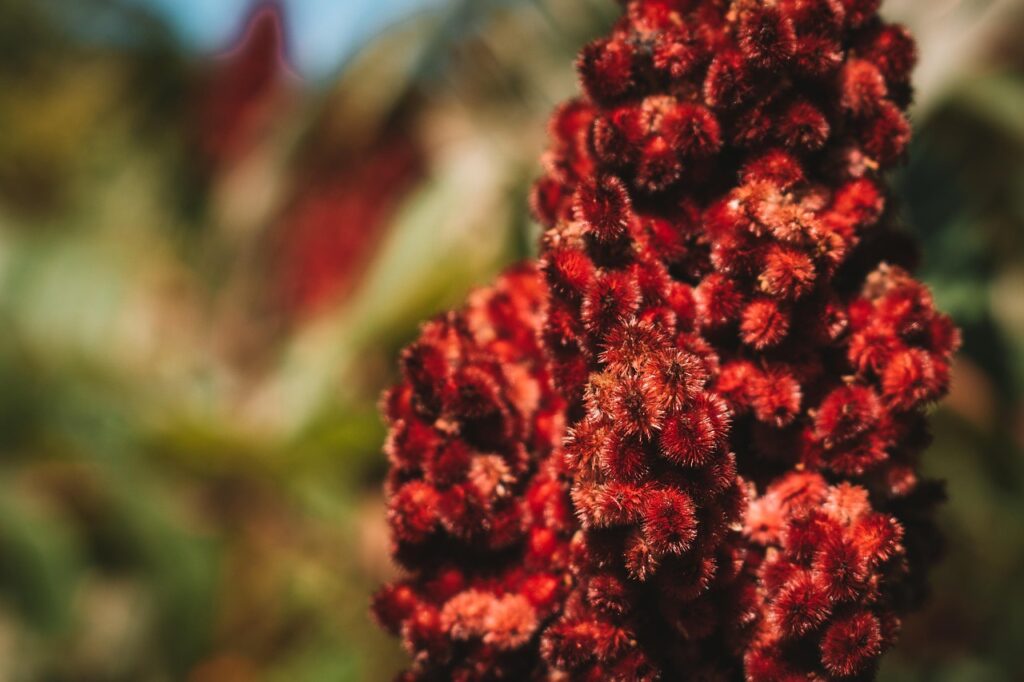
4. Staghorn Sumac (Rhus typhina)
Foragers often brew staghorn sumac’s edible berries in water to make a tangy, lemonade-like drink. However, these native plants have plenty of aesthetic appeal too, and they’re particularly attractive to birds in winter.
Native Range: East and Central United States and parts of Canada
Point of Interest: Bright red, edible berries
Attracts: Winter birds, especially finches, and pollinators in summer
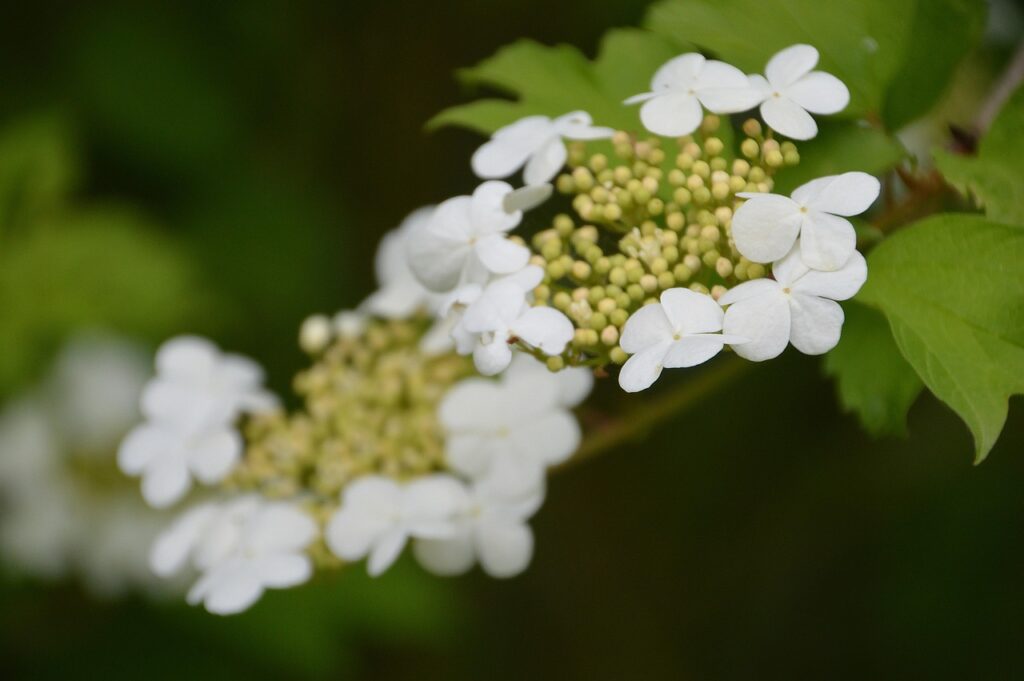
5. Highbush Cranberry (Viburnum trilobum)
Despite their name, highbush cranberries aren’t closely related to cranberry plants – but they’re edible! These plants provide year-long interest — from the moment their flowers emerge in spring to when their leaves shift into shades of purple in autumn and give way to their colorful winter berries.
Native Range: Northern United States and Canada
Point of Interest: Bright red, edible berries
Attracts: Winter birds, and summer pollinators
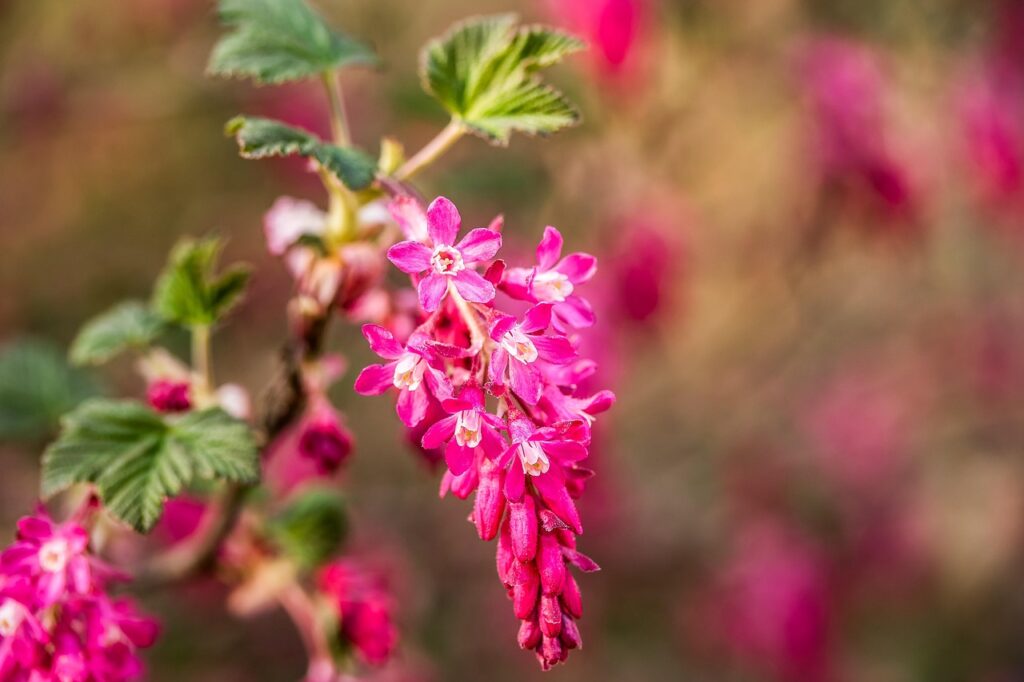
6. Chaparral Currant (Ribes malvaceum)
If you’re looking for more native flowers for winter, look no further than the Chaparral currant. These California natives belong to the gooseberry family, and they have a fast growth rate, edible berries, and a bloom time that stretches from December to April.
Native Range: California
Point of Interest: Winter blooming flowers
Attracts: Assorted birds and pollinators
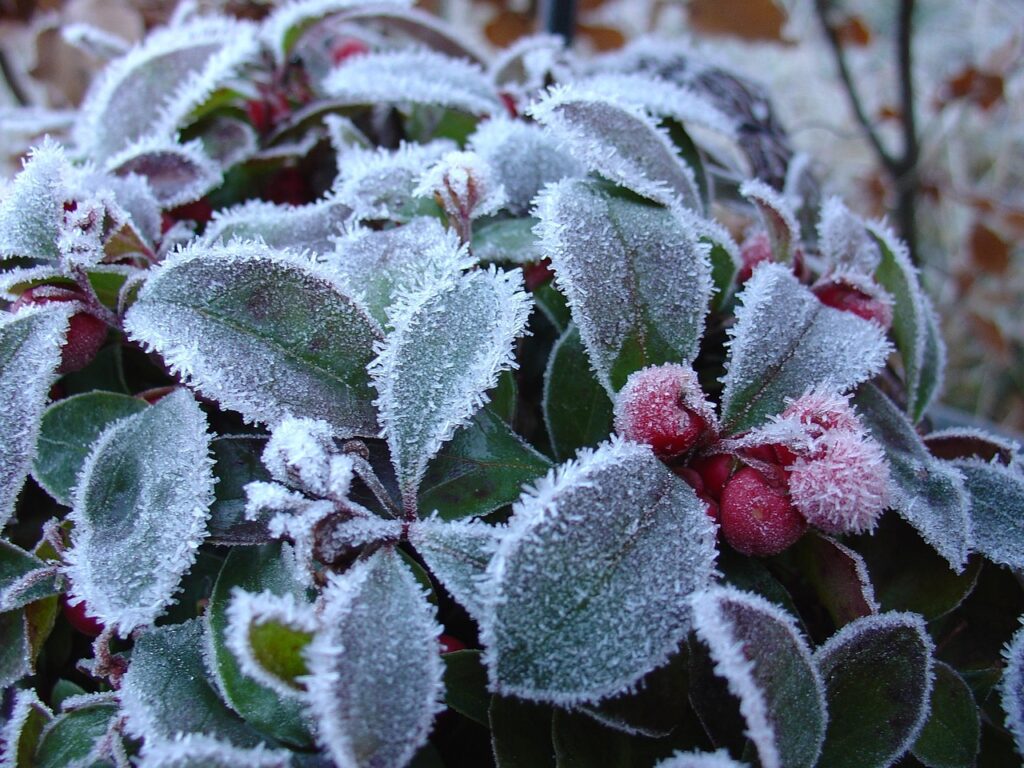
7. Wintergreen (Gaultheria procumbens)
Not to be confused with winterberry, wintergreen is a low-growing, groundcovering plant that’s especially well-suited for shade and acidic soil. With a bit of care, you can grow these pint-sized evergreens as winter container plants too! Where I grew up in Pennsylvania, wintergreen berries were often used to make teaberry ice cream.
Native Range: Eastern United States and Canada
Point of Interest: Evergreen leaves and bright red, edible berries
Attracts: Winter birds, including ground-dwelling birds like turkeys
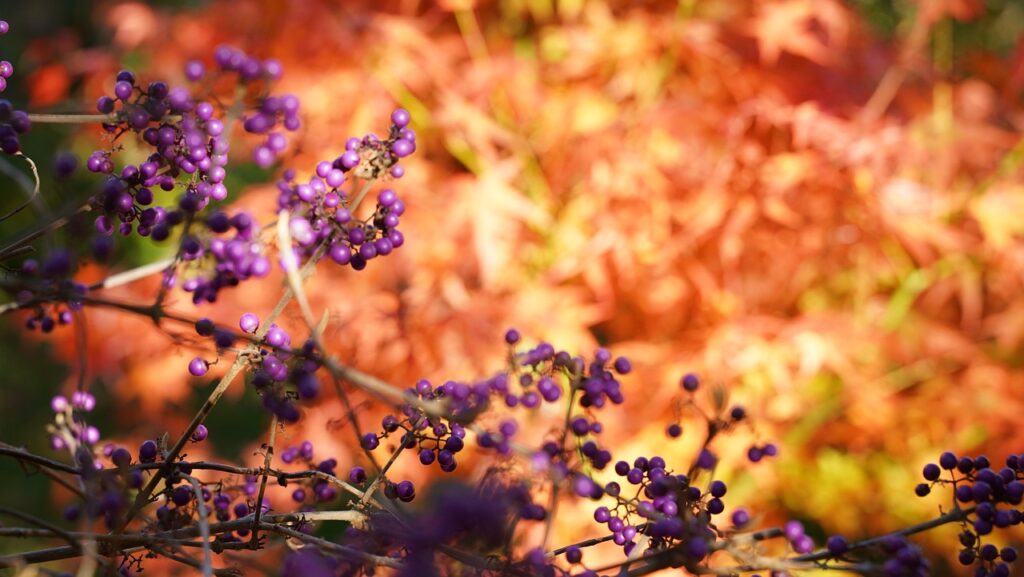
8. American Beautyberry (Callicarpa americana)
American beautyberry is a true stunner with showy clusters of magenta berries, which are particularly prominent when the plant drops its leaves in fall. These plants grow up to 8 feet tall, but they’re only winter hardy in zones 6 through 11.
Native Range: Southern United States
Point of Interest: Bright purple berries
Attracts: Winter birds, and summer pollinators
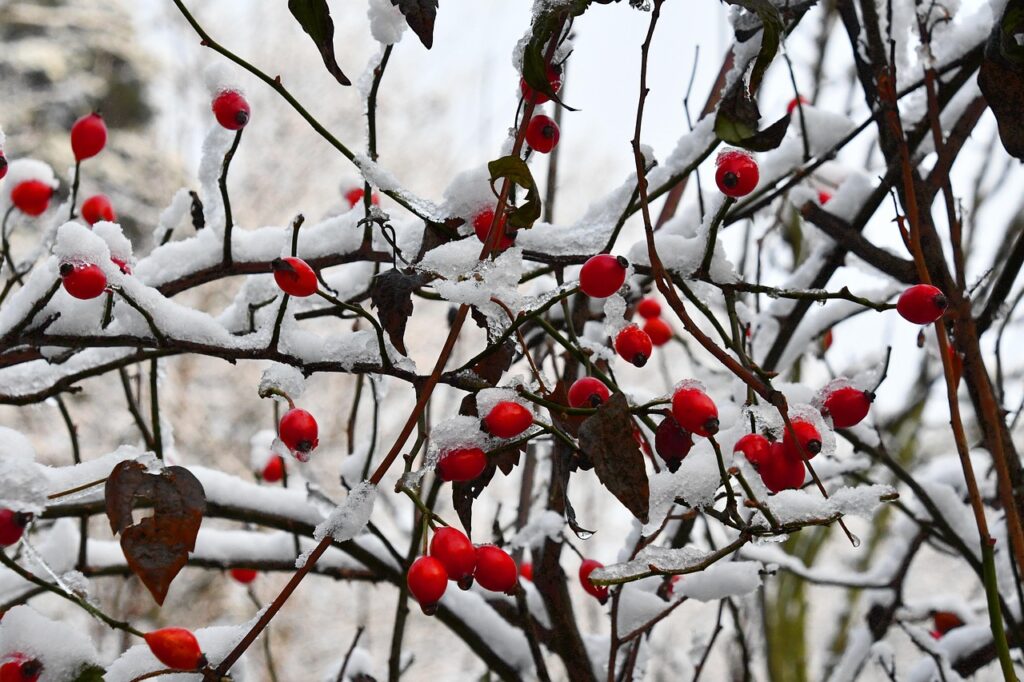
9. Native Roses (Rosa spp.)
There are lots of native roses to choose from, and most of them produce edible rosehips that last through the winter and attract winter birds. However, because there are some invasive rose species, it’s important to do a bit of research to find rose varieties that are native to your area!
Native Range: Depends on species
Point of Interest: Bright red, edible berries
Attracts: Winter birds, and summer pollinators
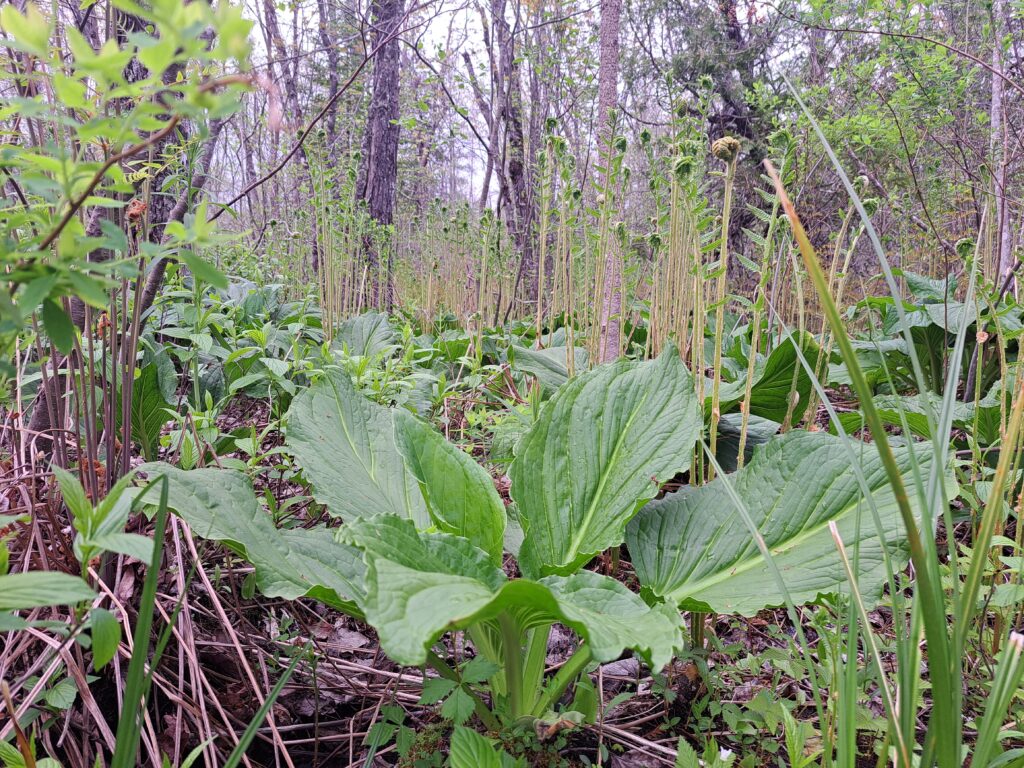
10. Skunk Cabbage (Symplocarpus foetidus)
In my mind, skunk cabbage is one of the most fascinating plants for winter gardens — in part because it’s capable of melting snow! This behavior, known as “thermogenesis,” allows skunk cabbage plants to start growing and blooming long before other plants wake up from their winter slumber. These plants are also highly tolerant of water and they’re a great choice for rain gardens and other soggy spots.
Native Range: Northeastern United States and parts of Canada
Point of Interest: Winter blooming flowers, water tolerant
Attracts: Assorted pollinators, especially flies
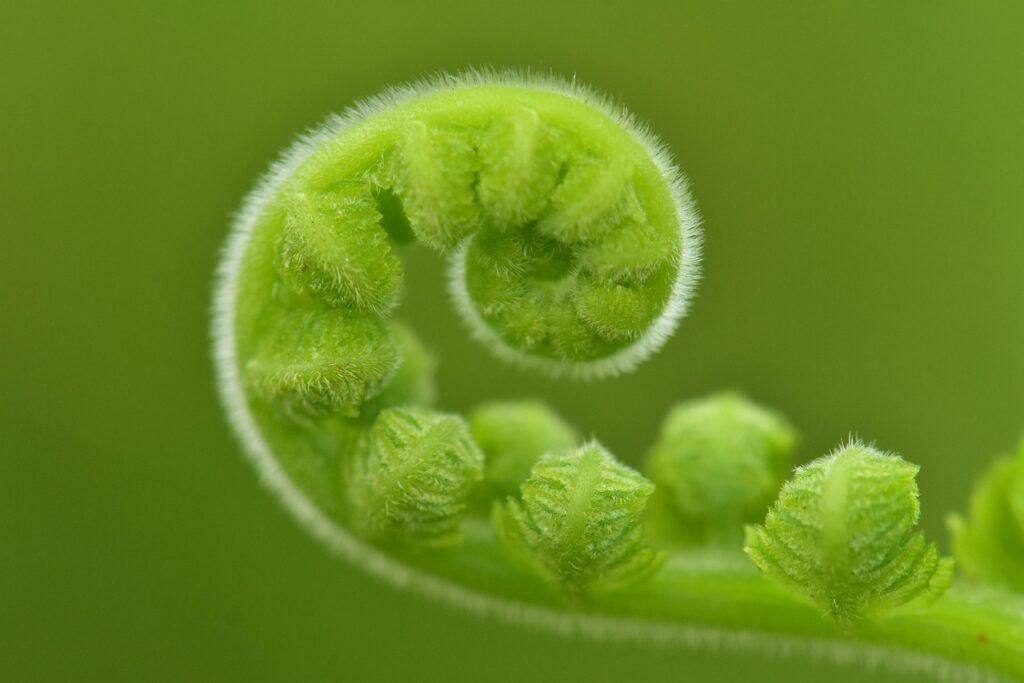
11. Christmas Fern (Polystichum acrostichoides)
Many ferns turn brown and brittle in winter, but Christmas ferns stay evergreen year-round. These plants provide habitat for small animals throughout the year, and they grow well in shade.
Native Range: East and Central United States and parts of Canada
Point of Interest: Evergreen fronds
Attracts: Ground-dwelling birds, host plant for various pollinators
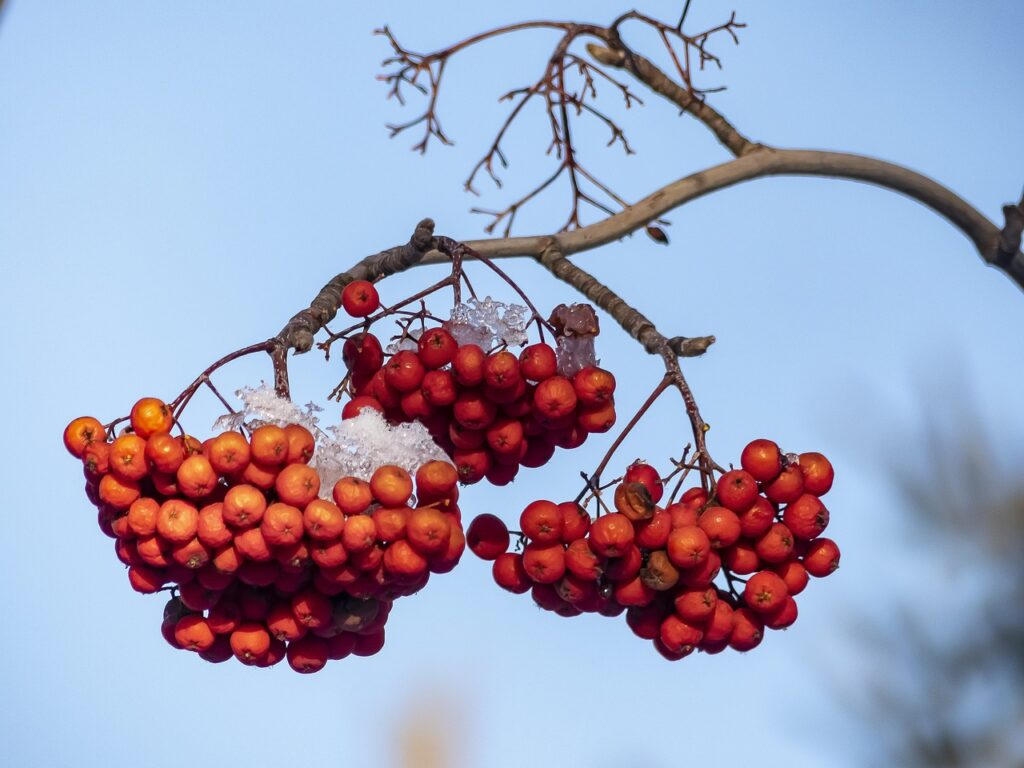
12. American Mountain Ash (Sorbus americana)
Also known as the rowan, American mountain ash produces reddish-orange berries that persist through winter … if wild birds don’t get to them! Intriguingly, rowan is closely related to roses and, like rosehips, rowan berries can be used to make teas and jellies.
Native Range: Northeastern United States and parts of Canada
Point of Interest: Edible, reddish-orange berries
Attracts: Winter birds, and summer pollinators
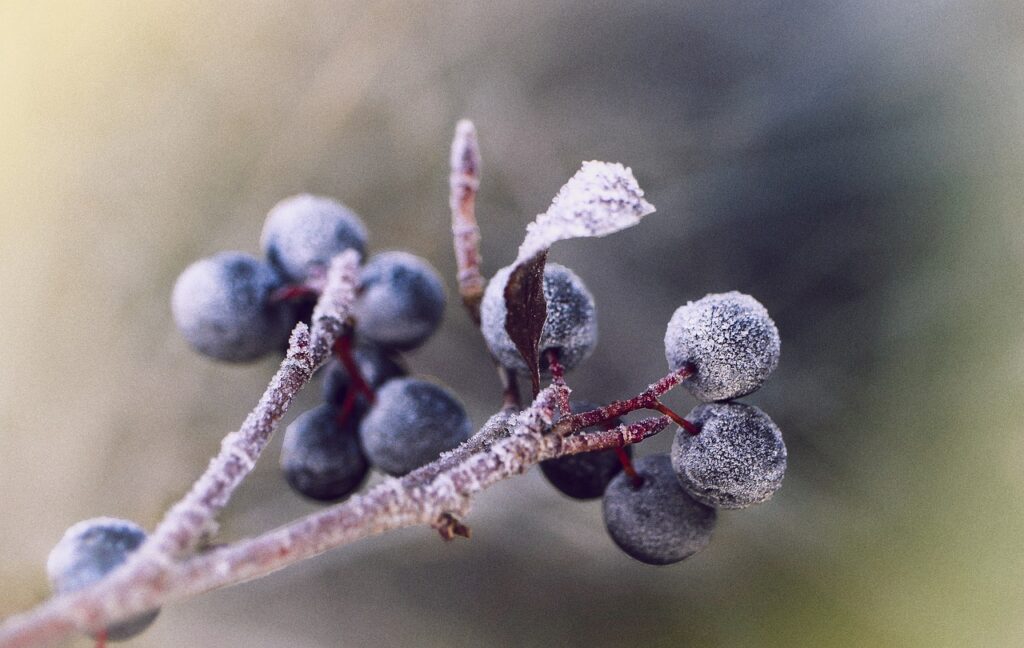
13. Chokecherry (Prunus virginiana)
North America has a number of native chokecherries that produce berries of different colors. These plants are particularly beneficial to moths and butterflies, as well as winter birds, and their fast growth rate makes them handy for enhancing garden privacy!
Native Range: Throughout Canada and the United States
Point of Interest: Winter berries
Attracts: Winter birds, and summer pollinators
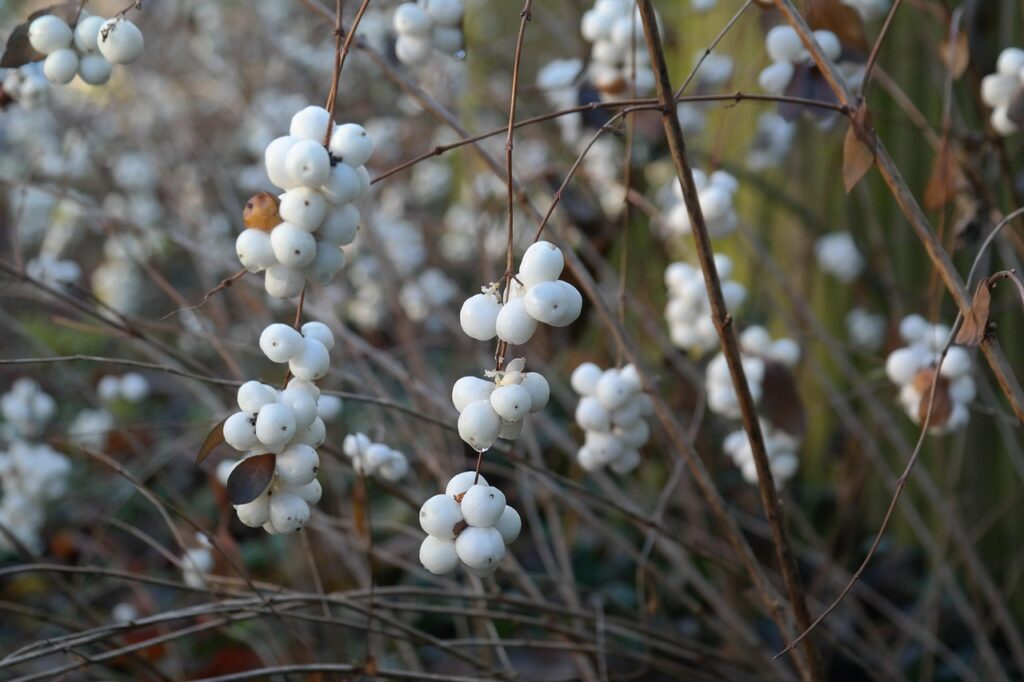
14. Snowberry (Symphoricarpos albus)
Aptly named snowberry is super cold hardy and it produces waxy, white berries that remain on the plant through winter. Like other berry-producing shrubs, this plant is highly attractive to winter birds, and it grows well in the dappled light along woodland margins or in full sun.
Native Range: Northern United States and Canada
Point of Interest: White winter berries
Attracts: Winter birds, and summer pollinators
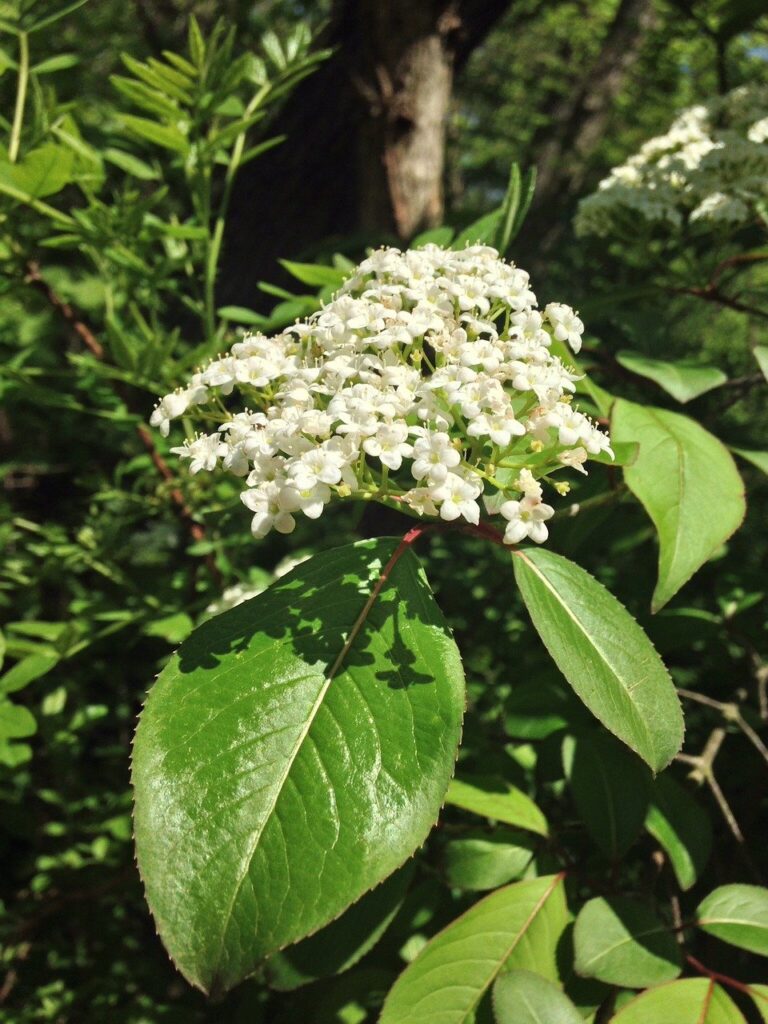
15. Blackhaw (Viburnum prunifolium)
A relative of the highbush cranberry, blackhaw plants produce dramatically dark berries, which attract birds like cardinals and flickers. These plants are also relatively drought tolerant, and their white clusters of springtime flowers are always a hit with pollinators.
Native Range: East and Central United States and parts of Canada
Point of Interest: Dark winter berries
Attracts: Winter birds, and summer pollinators
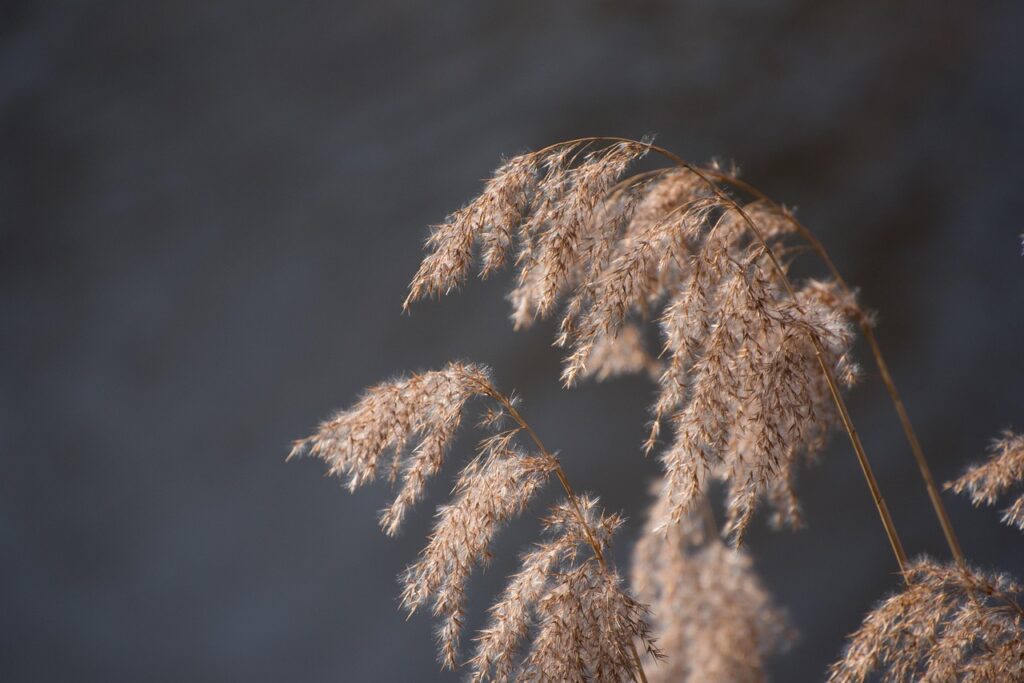
16. Native Grasses
Like wild roses, there are plenty of native North American grasses for winter interest; however, there are also some invasive varieties it’s best to avoid. Native grasses come in different sizes, but the taller species make particularly good backdrop plants for lower growing perennials. Grasses also add lots of movement to garden beds, and they provide sheltering spots for small critters!
Native Range: Depends on species
Point of Interest: Dried grass heads, movement
Attracts: Winter birds and small wildlife
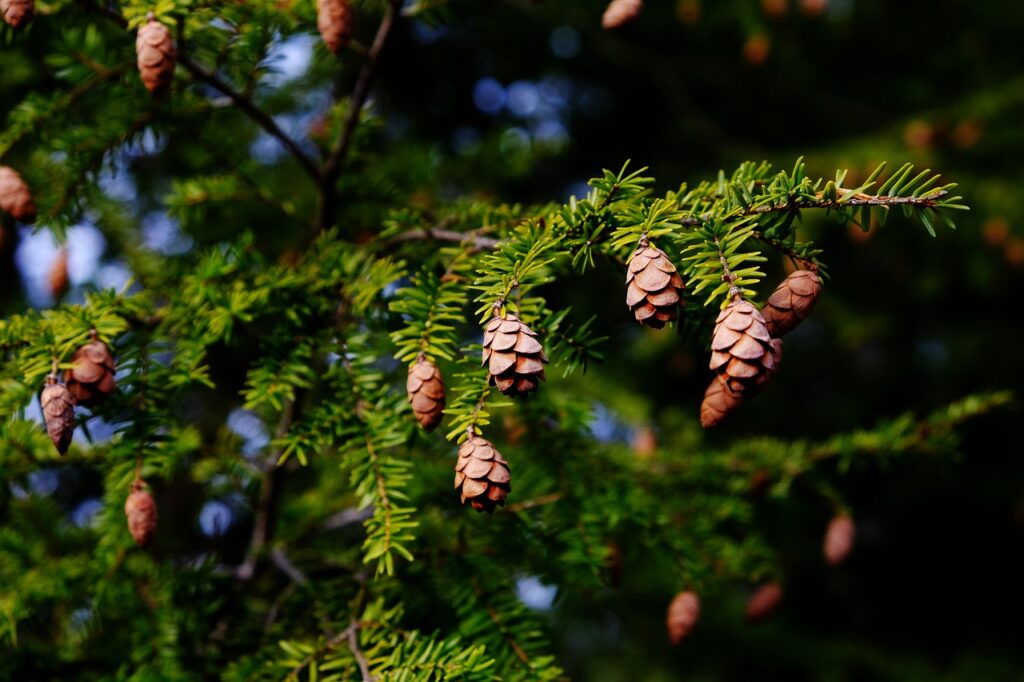
17. Native Evergreens
Evergreens, like pines, spruce, and firs, come in a range of sizes, and their densely needled branches provide excellent winter shelter for overwintering birds and other animals. Since they don’t drop their needles, evergreens are also some of the best plants to grow for winter privacy.
Native Range: Depends on species
Point of Interest: Evergreen needles, year-round privacy
Attracts: Winter birds and small wildlife
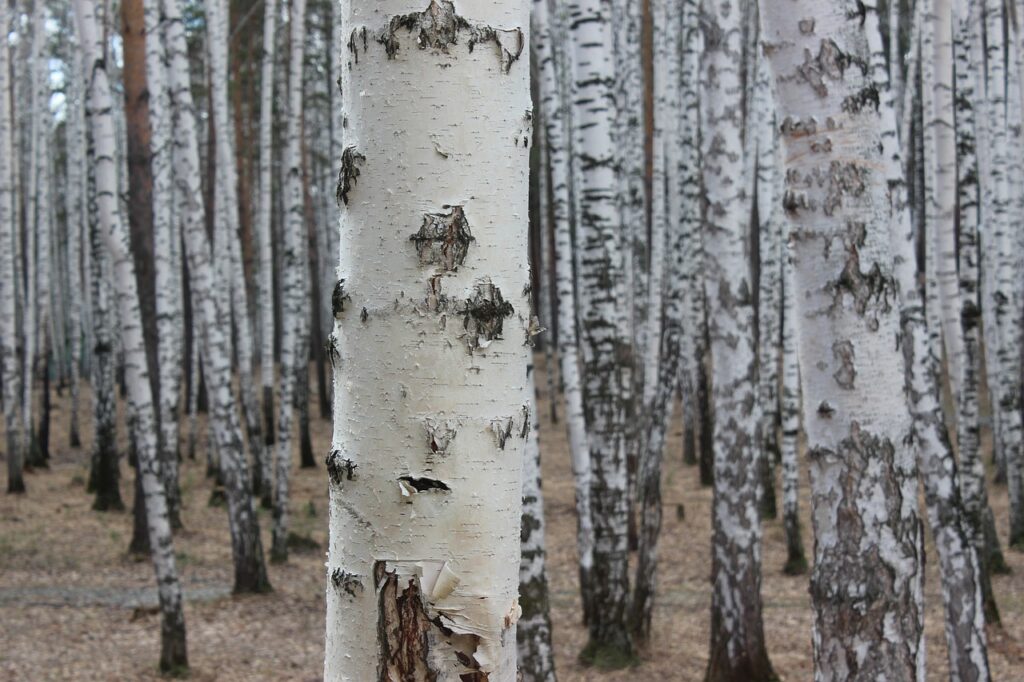
18. Native Birches (Betula spp.)
North America has a few noteworthy native birch trees. For example, paper birch trees are known for their stark, white bark, while river birches have thick, peeling bark and a high tolerance for soggy soil!
Native Range: Depends on variety
Point of Interest: Textured, peeling bark
Attracts: Birds, including yellow-bellied sapsuckers
